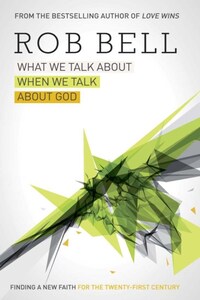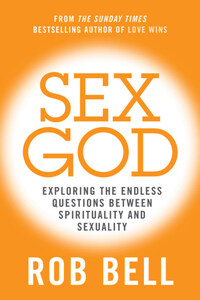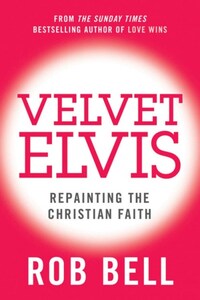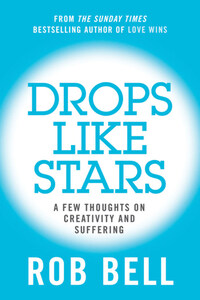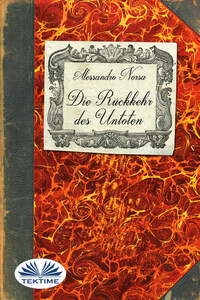PREFACE Welcome to my Velvet Elvis
In my basement, behind some bikes and suitcases and boxes, sits a Velvet Elvis. A genuine, bought-by-the-side-of-the-road Velvet Elvis. And to say that this painting captures The King in all his glory would be an understatement. It’s not the young Elvis—the thin one with the slicked-back hair in those black-and-white concert photos in which he’s playing a guitar that’s not plugged in. And it’s not the old Elvis—the big one in the shiny cape singing to old women in Hawaii. My painting is the “Pre-doughnut Elvis.”
A touch of blue in the hair; the tall, white collar that suggests one of those polyester jumpsuits; and those lips . . . if you stare long enough, you might even see them quiver.
But I think the best part of my Velvet Elvis is the lower left-hand corner, where the artist simply wrote a capital R and then a period.
R.
Because when you’re this good, you don’t even have to write your whole name.
What if, when the artist was done with this masterpiece, R. had announced there was no more need for anyone to paint, because he or she had just painted the ultimate painting? What if R. had held a press conference, unveiled his painting, and then called on all painters everywhere to put down their brushes, insisting that since the ultimate painting had been painted, there was simply no need for any of them to continue their work?
We would say that R. had lost his mind. We say this because we instinctively understand that art has to, in some way, keep going. Keep exploring, keep arranging, keep shaping and forming and bringing in new perspectives.
For thousands of years followers of Jesus, like artists, have understood that we have to keep going, exploring what it means to live in harmony with God and each other. The Christian faith tradition is filled with change and growth and transformation. Jesus took part in this process by calling people to rethink faith and the Bible and hope and love and everything else, and by inviting them into the endless process of working out how to live as God created us to live.
The challenge for Christians then is to live with great passion and conviction, remaining open and flexible, aware that this life is not the last painting.
Times change. God doesn’t, but times do. We learn and grow, and the world around us shifts, and the Christian faith is alive only when it is listening, morphing, innovating, letting go of whatever has gotten in the way of Jesus and embracing whatever will help us be more and more the people God wants us to be.
There are endless examples of this ongoing process, so I’ll describe just one. Around 500 years ago, a man named Martin Luther raised a whole series of questions about the painting the church was presenting to the world. He insisted that God’s grace could not be purchased with money or good deeds. He wanted everyone to have their own copy of the Bible in a language they could read. He argued that everyone had a divine calling on their lives to serve God, not just priests who had jobs in churches. This concept was revolutionary for the world at that time. He was articulating earth-shattering ideas for his listeners. And they heard him. And something big, something historic, happened. Things changed. Thousands of people connected with God in ways they hadn’t before.
But that wasn’t the end of it. Luther was taking his place in a long line of people who never stopped rethinking and repainting the faith. Shedding unnecessary layers and at the same time rediscovering essentials that had been lost. Luther’s work was part of what came to be called the Reformation. Because of this movement, the churches he was speaking against went through their own process of rethinking and repainting, making significant changes as a result.
And this process hasn’t stopped.
It can’t.
In fact, Luther’s contemporaries used a very specific word for this endless, absolutely necessary process of change and growth. They didn’t use the word reformed; they used the word reforming. This distinction is crucial. They knew that they and others hadn’t gotten it perfect forever. They knew that the things they said and did and wrote and decided would need to be revisited. Rethought. Reworked.
I’m part of this tradition.
I’m part of this global, historic stream of people who believe that God has not left us alone but has been involved in human history from the beginning. People who believe that in Jesus, God came among us in a unique and powerful way, showing us a new kind of life. Giving each of us a new vision for our life together, for the world we live in.
